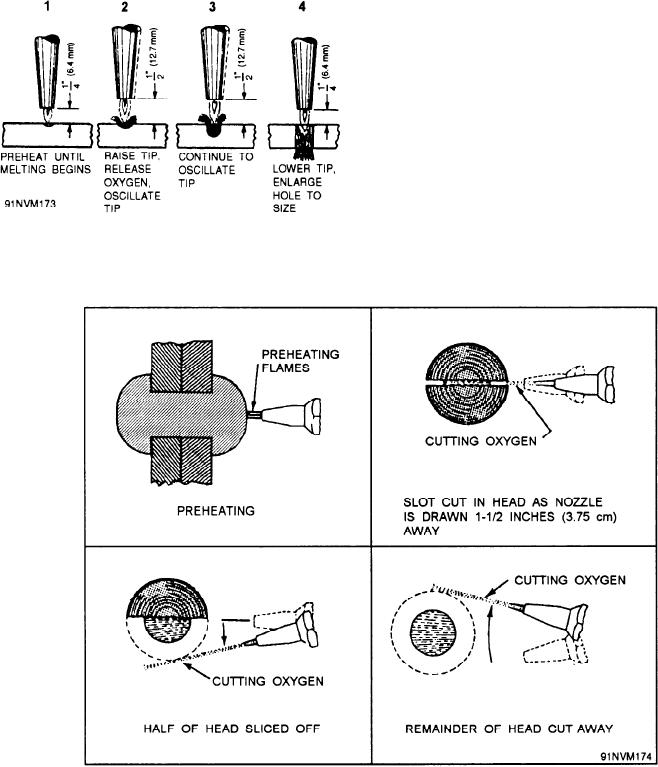
round spot has been heated to a bright red. Introduce
Piercing Holes
the cutting oxygen by gradually depressing the oxygen
The cutting torch is also a valuable tool for
lever, and at the same time slightly raise the tip away
piercing holes in steel plate. The steps are illustrated
from the work to keep from blowing slag back onto the
in figure 8-19. Lay the plate out on two firebricks so
cutting tip. As you start raising the torch and
that the flame will not hit something else when it bums
introducing the cutting oxygen, start rotating the torch
through the plate. Hold the torch over the hole location
with a spiral motion. This will cause the molten slag
with the tips of the inner cone of the preheating flames
to be blown out of the hole. The hot slag may fly
about one-fourth inch above the surface of the plate.
around, so BE SURE your goggles are well fitted to
Continue to hold the torch in this position until a small
your eyes and face, and avoid having your head
directly above the cut.
If you need a larger hole, outline the edge of the
hole with a piece of chalk, and follow the procedure
given in the previous paragraph. Start the cut from the
hole that you have pierced by moving the preheating
flames to the normal distance and by working to and
following the line that has been drawn on the plate.
Round holes can be made by using a cutting torch with
a radius bar attachment.
Cutting Rivets
When you are required to remove rivets from
plates that are to be disassembled, you will find the
cutting torch a good tool. The cutting procedure is
Figure 8-19.--Piercing a hole with an oxyacetylene cutting
shown in figure 8-20. Use the preheating flames of the
torch.
Figure 8-20.--Using a cutting torch to remove the head of a rivet.
8-17

